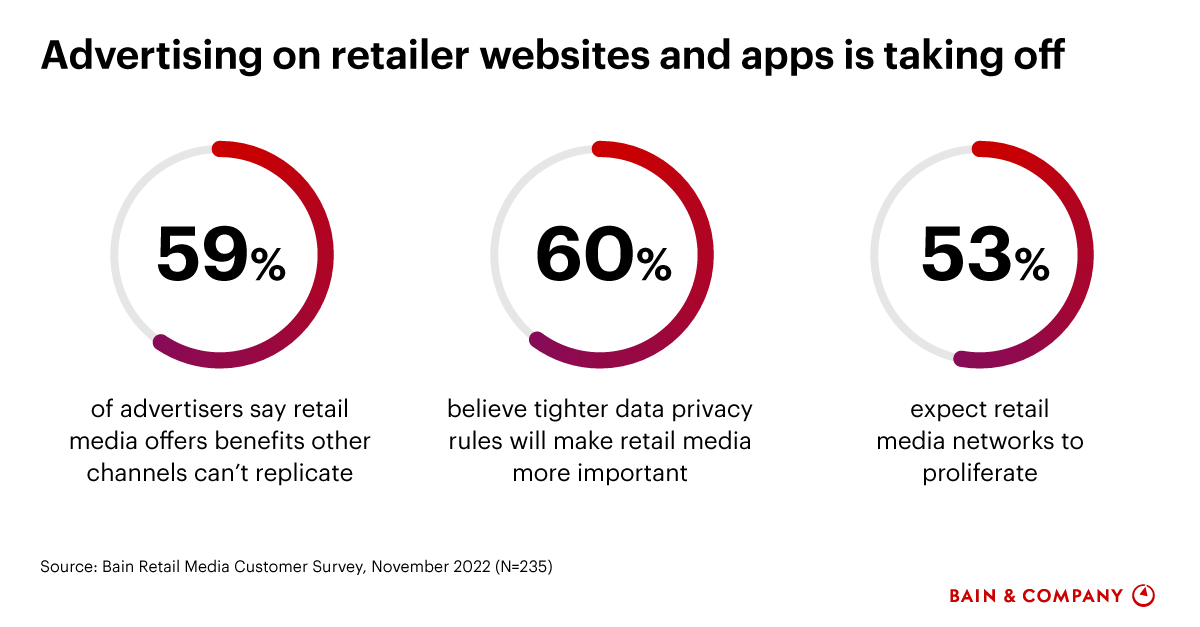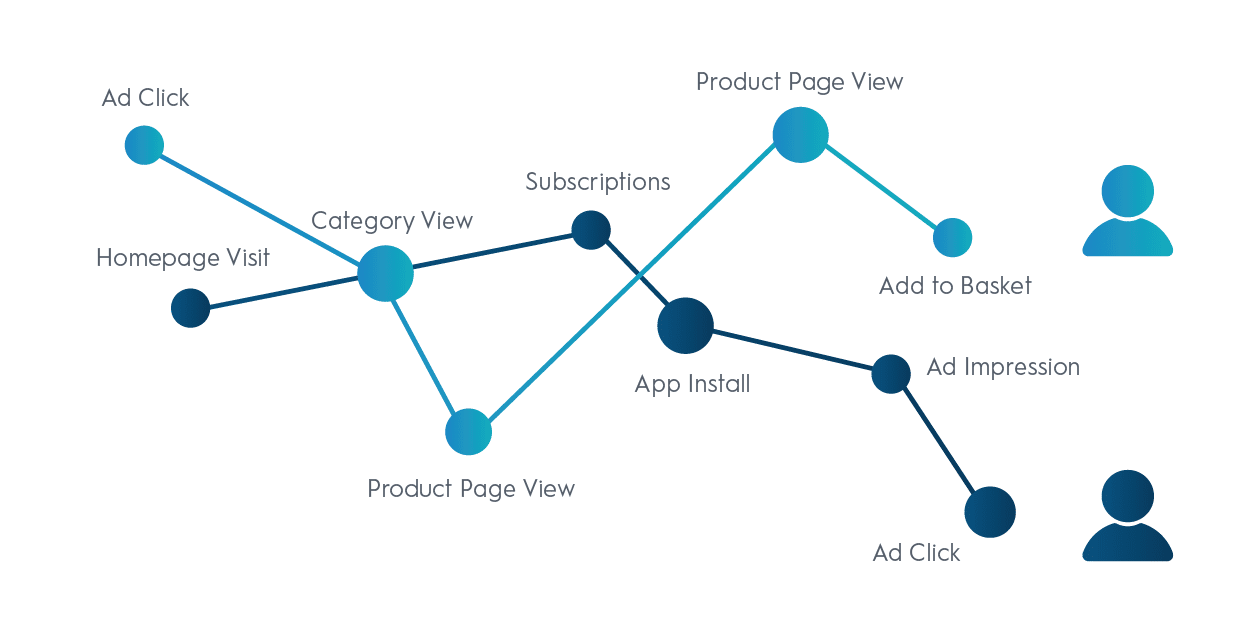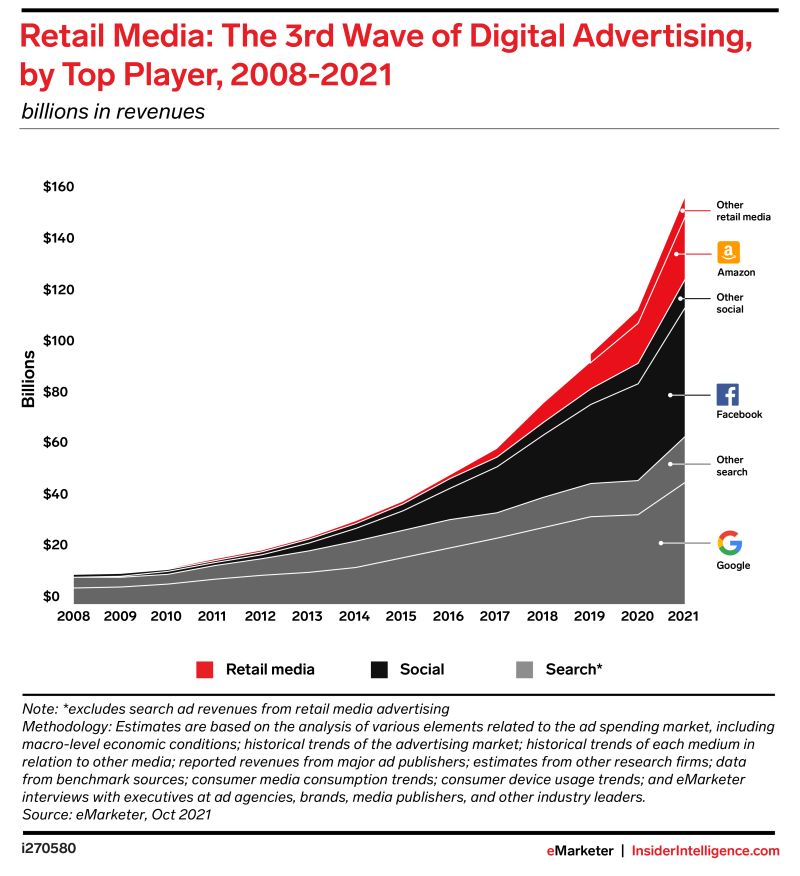Why Your Customer Data Is More Valuable Than You Think When it Comes to Retail Media
Understanding where your data comes from and how to connect it all together is critical when setting up a Retail Media Network because it enables you to make informed decisions about brand relationships, advertising campaigns, product offerings, and customer engagement strategies.
But before diving into the conversation, let’s take a step back and ask ourselves, what is a Retail Media Network? A Retail Media Network, or RMN, is essentially an advertising offering and platform operated by retailers that allow brands to advertise to their customers while they shop. These networks provide valuable data to advertisers around consumer behavior, preferences, and purchasing patterns, which can be used to optimize advertising campaigns, improve product offerings, and increase customer loyalty.

However, for Retail Media Networks to make the most of this data, you need to understand how it is generated, where it comes from, and how it can be connected to other data sources. For example, you might need to connect customer purchase data from your POS system with website traffic data from your web analytics tool to get a complete picture of customer behavior. Without this level of integration and understanding, you might miss important insights and opportunities. Setting up a Retail Media Network properly requires a deep understanding of the customer journey and how customers interact with your brand across various touchpoints. By connecting all of your data sources, you can gain a more comprehensive understanding of how customers engage with your brand, which can help you optimize your advertising and marketing efforts for maximum impact.
What types of data should I be thinking about,
and how does it all come together?
Now that is a complex question, which as you can likely guess, has many different answers that will also be unique to the company that is asking them. Just to create some common ground, however, let’s speak in broader strokes for a few minutes so that we can identify a rough model for what this looks like.
In a typical RMN architecture, the data sources might include first-party data such as purchase history, customer profiles, and website activity, as well as third-party data such as demographic and behavioral data. Retailers may also use data from loyalty programs, social media, and offline sources such as in-store purchases and events.
Data is collected from these sources and fed into your RMN platform, where it is processed and analyzed to create audience segments and targeting rules. Depending on the specific Reail Media platform you may be using, you may have access to additional tools that use machine learning algorithms to optimize targeting and delivery of ads to maximize the chances of conversion.
Once the targeting rules are set, the RMN platform will serve the ads across the retailer’s digital channels, such as their website, mobile app, or email campaigns. The ads may take different forms, such as banner ads, product recommendations, or sponsored content.

Throughout the process, retailers can track the performance of the ads in real-time, using metrics such as click-through rates, conversion rates, and return on ad spend. This data can be used to refine the targeting rules and optimize the performance of in-stream and future campaigns.
Overall, the integration of different data sources into an RMN platform is a complex process that requires careful planning, data management, and analytics.
Here are some of the typical types of data that can be used in RMN advertising:
1. Purchase history: RMNs can use data on customers’ past purchases to suggest relevant products or promotions.
2. Browsing behavior: Data on customers’ online activity, such as pages viewed or items added to a cart, can inform targeted ads and promotions.
3. Demographics: Data on customers’ age, gender, location, and other demographic information can be used to create more relevant and effective ads.
4. Search behavior: Data on customers’ search queries and activity can inform targeted ads based on their interests and needs.
5. Intent data: Data on customers’ intent, such as their likelihood to purchase or engagement with specific product categories, can inform targeted ads and promotions.
6. In-store behavior: RMNs can use data on customers’ in-store behavior, such as their dwell time and path to purchase, to inform targeted ads and promotions.
7. Loyalty program data: Data on customers’ engagement with a company’s loyalty program, such as points earned or rewards redeemed, can inform targeted ads and promotions.
8. Social media data: Data on customers’ social media behavior, such as likes, shares, and comments, can inform targeted ads and promotions.
In the world of advertising, it’s fair to say that while retail media is still in its relative infancy compared to the market at large, retail media market share is growing, and at an exponential pace. According to Forbes.com, Retail media advertising spending is anticipated to reach $160 billion in the U.S. alone by 2027. And if trends continue, experts anticipate that retail media ad spending may surpass some traditional advertising channels, like TV, by 2025. These projections underscore the importance of retailers considering their retail media strategy carefully, and working with strategic partners upfront to make sense of their data and help determine the right infrastructure to scale.

Whether just starting out or reaching a point of inflection, it can be highly beneficial to partner with an outside team of experts that have hands-on experience working with other networks to design an architecture and roadmap to support the growth ahead.
Here at V2, we are supporting customers in setting up for success at launch, but also helping ensure the right infrastructures are in place so customers can confidently scale as their networks mature. Our roots in optimizing technology for traditional ad sales companies and our longstanding partnership with Salesforce has enabled us to help retailers get to where they need to go (and faster).
Building Trust Starts With A Conversation.
To learn more about how V2 can help build or optimize your Retail Media Network, we invite you to connect with our team so that we can accelerate your growth.


